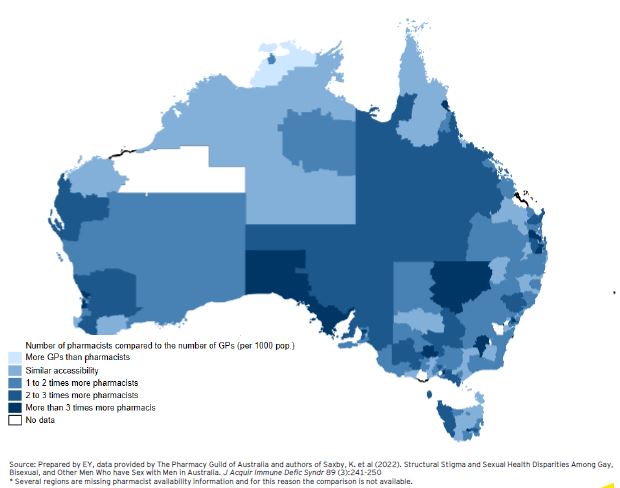The Pharmacy Guild has commissioned a report from professional services firm Ernst & Young to provide analysis on the qualitative and quantitative impacts of pharmacists working to the full scope of practice for 10 conditions.
The full report will be released on World Pharmacists Day on 25 September but below is an excerpt from the report.
The Australian healthcare system faces the ongoing challenge of meeting increasing demand driven by a growing and ageing population, rising rates of chronic disease, and the projected increase in the utilisation rate of health services. In addition, the extraordinary disruption caused by the COVID-19 pandemic is expected to magnify existing health disparities and fall disproportionately on vulnerable population groups. There has never been a more important time to alleviate this pressure in the healthcare system by increasing opportunities for all health professionals to collaborate and deliver to the highest standards of clinical care to ensure the safety and wellbeing of all patients in Australia.
Community pharmacists are a key component in the healthcare system and help support the health of the community they serve. Community pharmacists are highly trained professionals, experts in medication management, and knowledgeable and disease management and prevention. However, there are legislative barriers which control and restrict the scope of services that pharmacists can provide to patients - limiting opportunities to improve medication compliance and restricting the provision of more screening services for early diagnosis and preventative care.
Pharmacists who are working to their full scope of practice can more optimally contribute to the health system and if fully utilised can increase the capacity and range of services available to patients across the health network, particularly for those living regional, rural and remote areas. Improved access across the population will work to reduce waiting lists for general practice in metropolitan areas.
Access to primary care, as shown in the map below, reflects the ratio of available pharmacists to GPs, with the darker shade of blue representing a greater number of pharmacists to every one GP.
The map demonstrates that there is comparatively greater access to pharmacists than GPs across most of Australia. Access to pharmacists in regional and remote areas is predominantly 1 to 3 or more times greater than to GPs. This is even greater access to pharmacists in metro regions where there is generally between 2 to 3 or more times greater access to pharmacists than to GPs.
The United States, Canada, Germany and New Zealand set the benchmark for pharmacy practice. They have undertaken trials across a range of conditions to assess the viability and efficacy of pharmacist-led diagnosis, management and treatment. These include urinary tract infection (UTI), dyslipidaemia, vaccination and the authority to prescribe certain medications. These trials have shown that pharmacists can achieve clinical outcomes which are comparable to GP-led treatments, yet with improved patient satisfaction.



